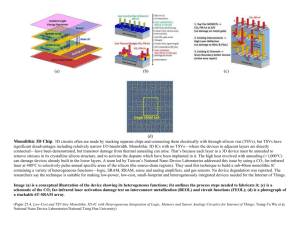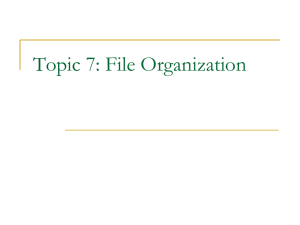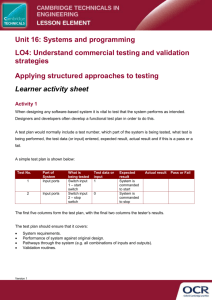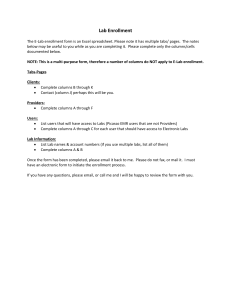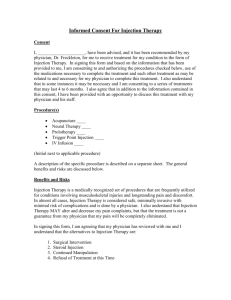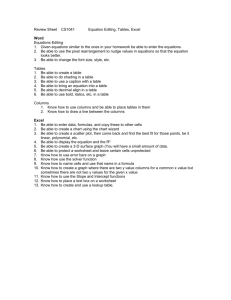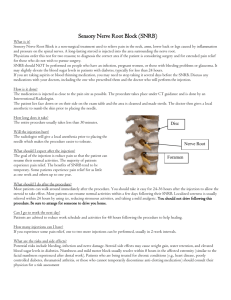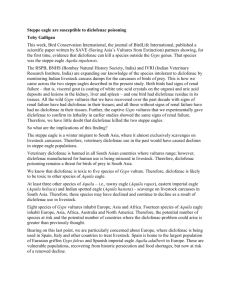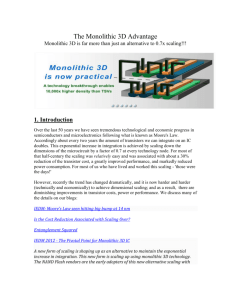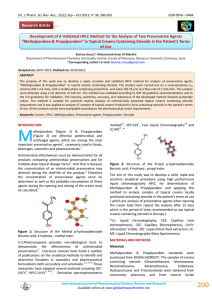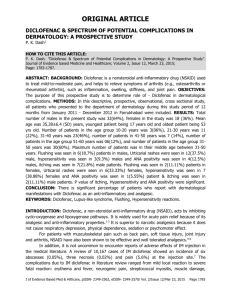2003 - Flow Injection Tutorial
advertisement
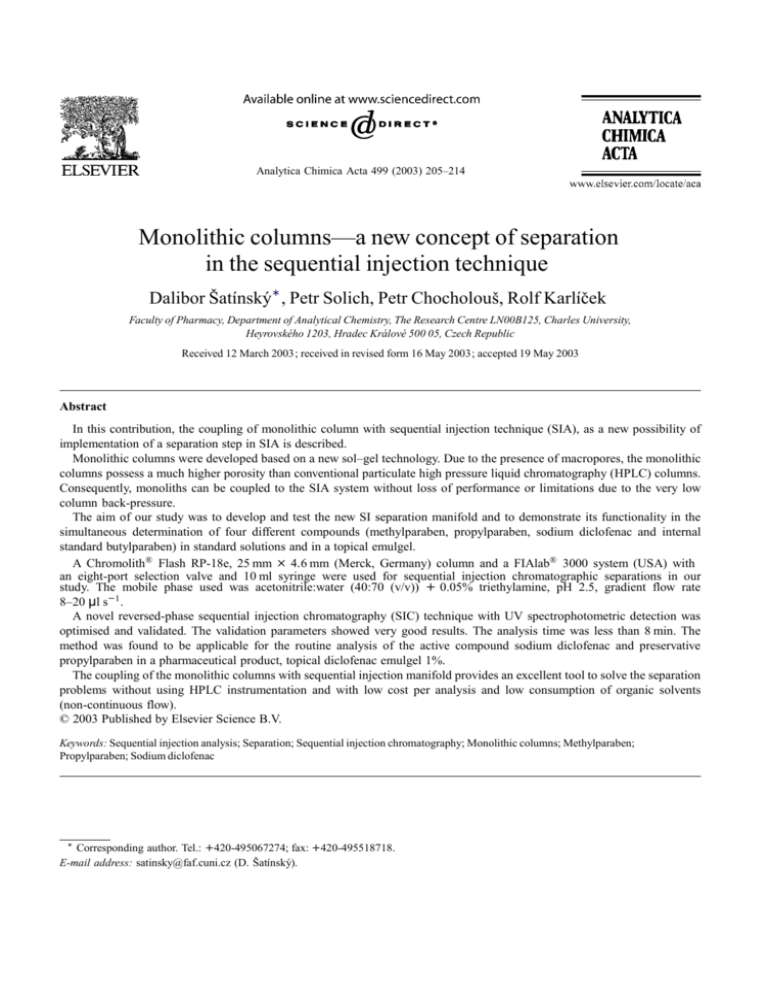
Analytica Chimica Acta 499 (2003) 205–214 Monolithic columns—a new concept of separation in the sequential injection technique Dalibor Šatı́nský∗ , Petr Solich, Petr Chocholouš, Rolf Karlı́ček Faculty of Pharmacy, Department of Analytical Chemistry, The Research Centre LN00B125, Charles University, Heyrovského 1203, Hradec Králové 500 05, Czech Republic Received 12 March 2003; received in revised form 16 May 2003; accepted 19 May 2003 Abstract In this contribution, the coupling of monolithic column with sequential injection technique (SIA), as a new possibility of implementation of a separation step in SIA is described. Monolithic columns were developed based on a new sol–gel technology. Due to the presence of macropores, the monolithic columns possess a much higher porosity than conventional particulate high pressure liquid chromatography (HPLC) columns. Consequently, monoliths can be coupled to the SIA system without loss of performance or limitations due to the very low column back-pressure. The aim of our study was to develop and test the new SI separation manifold and to demonstrate its functionality in the simultaneous determination of four different compounds (methylparaben, propylparaben, sodium diclofenac and internal standard butylparaben) in standard solutions and in a topical emulgel. A Chromolith® Flash RP-18e, 25 mm × 4.6 mm (Merck, Germany) column and a FIAlab® 3000 system (USA) with an eight-port selection valve and 10 ml syringe were used for sequential injection chromatographic separations in our study. The mobile phase used was acetonitrile:water (40:70 (v/v)) + 0.05% triethylamine, pH 2.5, gradient flow rate 8–20 µl s−1 . A novel reversed-phase sequential injection chromatography (SIC) technique with UV spectrophotometric detection was optimised and validated. The validation parameters showed very good results. The analysis time was less than 8 min. The method was found to be applicable for the routine analysis of the active compound sodium diclofenac and preservative propylparaben in a pharmaceutical product, topical diclofenac emulgel 1%. The coupling of the monolithic columns with sequential injection manifold provides an excellent tool to solve the separation problems without using HPLC instrumentation and with low cost per analysis and low consumption of organic solvents (non-continuous flow). © 2003 Published by Elsevier Science B.V. Keywords: Sequential injection analysis; Separation; Sequential injection chromatography; Monolithic columns; Methylparaben; Propylparaben; Sodium diclofenac ∗ Corresponding author. Tel.: +420-495067274; fax: +420-495518718. E-mail address: satinsky@faf.cuni.cz (D. Šatı́nský). 1. 0003-2670/$ – see front matter © 2003 Published by Elsevier Science B.V. doi:10.1016/S0003-2670(03)00625-1 214 D. Šatı́nský et al. / Analytica Chimica Acta 499 (2003) 205–214
